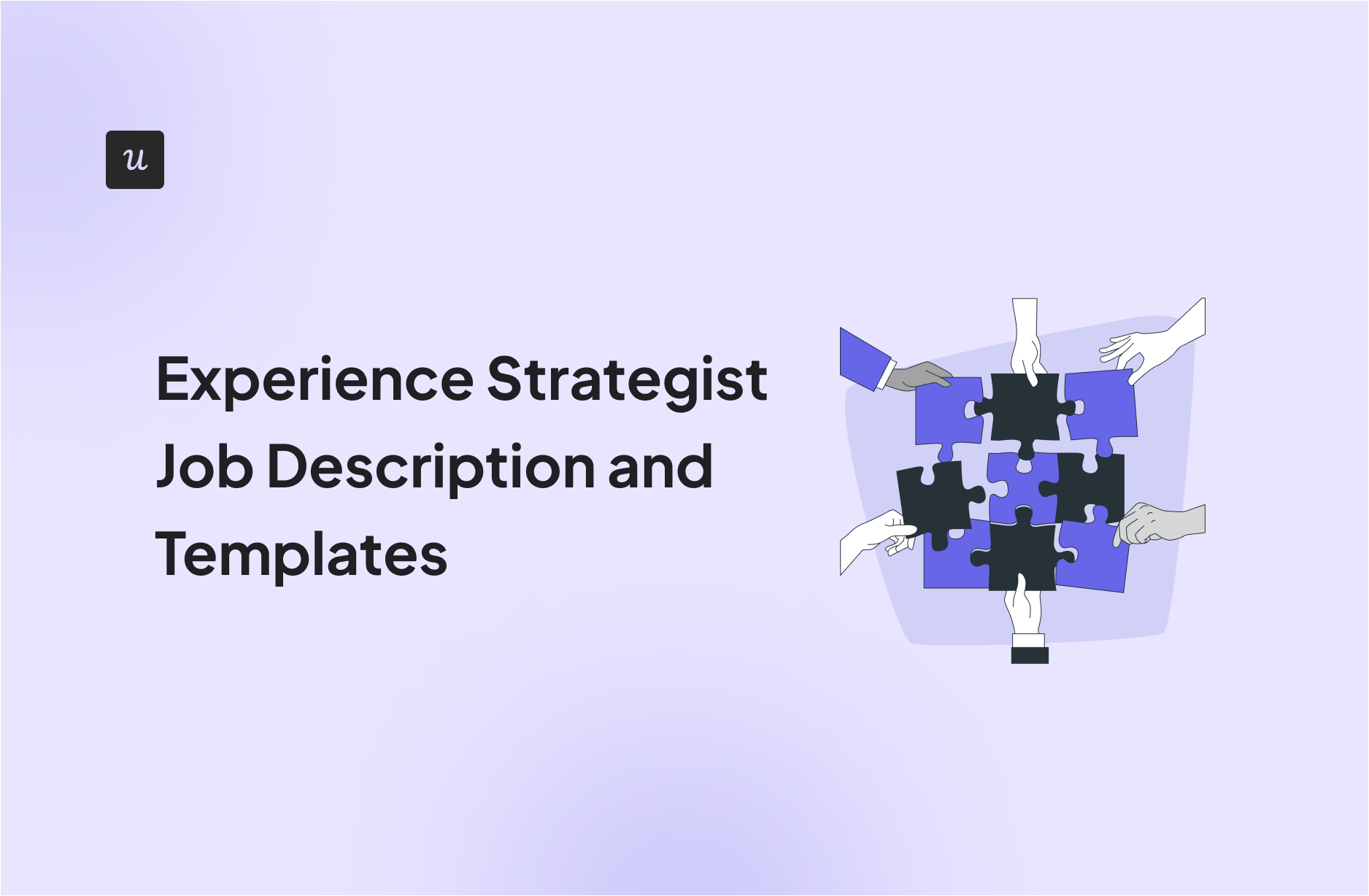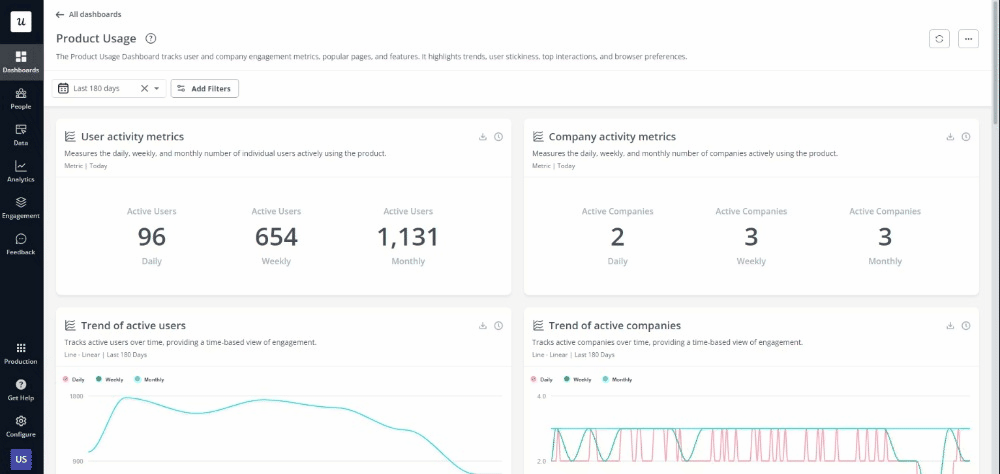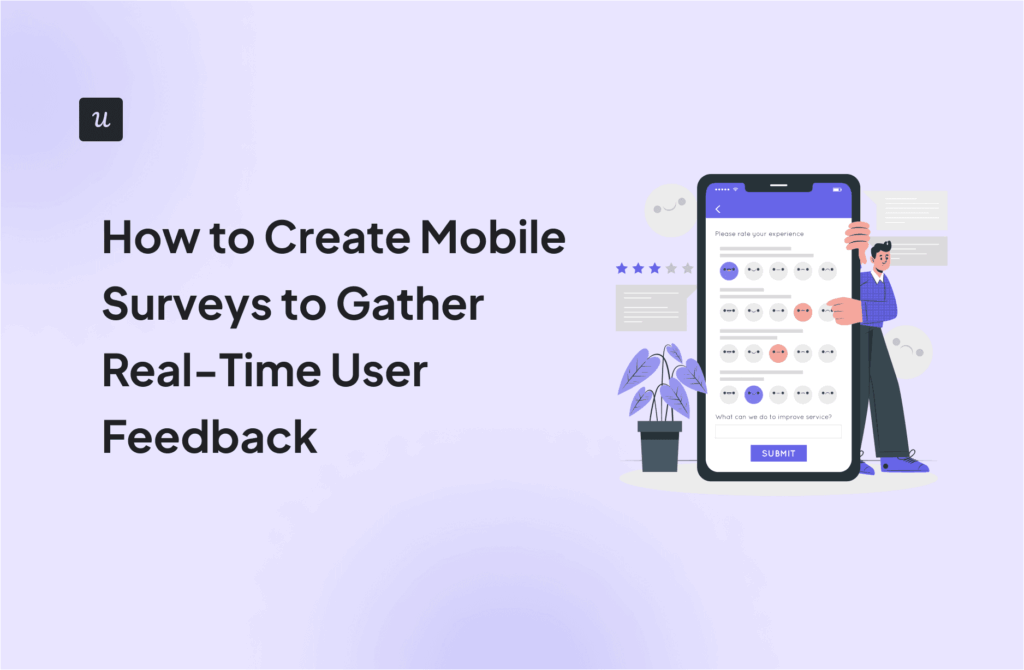
Interested in experience strategist roles? You’re in the right place!
In this guide, we’ll explore the ins and outs of experience strategist roles through detailed job descriptions and handy templates.
Whether you’re hiring, job hunting, or simply curious, we’ve got you covered with practical insights and ready-to-use resources.
Let’s dive in!
Try Userpilot Now
See Why 1,000+ Teams Choose Userpilot

TL;DR
- An experience strategist designs and optimizes user experiences across different touchpoints to enhance customer satisfaction and engagement.
- They combine insights from user research, data analytics, and design thinking to create cohesive and compelling experiences that align with business goals.
-
An experience strategist job description outlines the key responsibilities, must-have skills, and qualifications needed to define and drive a cohesive UX vision across all touchpoints, aligning user needs with business goals to create meaningful and impactful user experiences.
-
It can also include preferred skills, experience, and certifications. The specific requirements for this role will vary depending on the company size, industry, and the complexity of the products or services offered.
-
For instance, an experience strategist at a large e-commerce company might focus on optimizing the entire customer journey, from product discovery to checkout, while one at a smaller startup might concentrate on establishing a strong UX foundation and developing user personas for a new product.
- Looking into tools for experience strategists? Userpilot is an all-in-one product platform with engagement features and powerful analytics capabilities. Book a demo to see it in action!
What is an experience strategist?
An experience strategist designs and optimizes user experiences across different touchpoints to enhance customer satisfaction and engagement. They combine insights from user research, data analytics, and design thinking to create cohesive and compelling experiences that align with business goals.
Experience strategist’s main responsibilities
An experience strategist plays a crucial role in designing and optimizing user experiences to enhance customer satisfaction and engagement. Their responsibilities encompass a variety of tasks aimed at improving user interactions and ensuring a seamless experience across all touchpoints.
- Conduct user research: Gather insights into user needs, behaviors, and pain points through interviews, surveys, and usability testing to inform design decisions.
- Develop user personas: Create detailed user personas based on research to better understand target audiences and tailor experiences to meet their needs.
- Create user journey maps: Visualize the user journey across different touchpoints to identify areas for improvement and ensure a cohesive experience.
- Collaborate with cross-functional teams: Work closely with design, product, marketing, and engineering teams to align strategies and ensure a unified approach to user experience.
- Design wireframes and prototypes: Develop wireframes and interactive prototypes to test and iterate on design concepts before implementation.
- Optimize onboarding processes: Design and refine user onboarding experiences to ensure new users can easily understand and adopt the product.
- Analyze user data: Use data analytics tools to track user behavior and measure the effectiveness of implemented strategies, making data-driven decisions.
- Stay updated with industry trends: Continuously educate yourself on the latest trends, tools, and best practices in UX and experience strategy.
- Conduct A/B testing: Perform A/B tests to compare different design elements and identify the most effective solutions for enhancing user experience.
- Present findings and recommendations: Communicate insights and strategic recommendations to stakeholders, ensuring alignment and buy-in for proposed changes.
Experience strategist job description and template
We are seeking an innovative and strategic Experience Strategist to join our team. This role is pivotal in enhancing customer satisfaction and engagement by designing and optimizing user experiences across all touchpoints. The ideal candidate will have a strong background in user research, data analysis, and design thinking.
Key responsibilities:
- Develop and implement user experience strategies that align with business objectives.
- Conduct user research and gather insights to understand customer needs and pain points.
- Collaborate with cross-functional teams, including design, marketing, product, and engineering, to create cohesive and compelling experiences.
- Analyze user data and feedback to identify areas for improvement and measure the impact of implemented strategies.
- Create user personas, journey maps, and experience blueprints to guide design and development efforts.
- Stay up-to-date with industry trends and best practices to continuously improve the user experience.
- Present findings and recommendations to stakeholders, ensuring alignment and buy-in for proposed strategies.
Qualifications:
- Bachelor’s degree in Design, Marketing, Psychology, or a related field.
- 3+ years of experience in user experience design, strategy, or a related role.
- Strong analytical skills with the ability to interpret data and make data-driven decisions.
- Excellent communication and presentation skills.
- Experience with customer journey mapping and user research methodologies.
Preferred qualifications:
- Master’s degree in a related field.
- Experience in a similar role within a B2B SaaS company.
- Knowledge of front-end development languages (HTML, CSS, JavaScript) is a plus.
Best practices to be a great experience strategist
To excel as an experience strategist, follow these best practices to ensure user-centric and impactful strategies:
- Conduct thorough user research: Invest time in understanding your users’ needs, behaviors, and pain points through various research methods such as interviews, surveys, and usability testing. This foundational knowledge ensures that your strategies are user-centric.
- Embrace data-driven decision-making: Utilize data analytics to inform your strategies and measure their effectiveness. By basing decisions on solid data, you can create more targeted and impactful user experiences.
- Collaborate across teams: Work closely with cross-functional teams, including design, development, marketing, and product management. Effective collaboration ensures that all aspects of the user experience are aligned and cohesive.
- Stay updated with industry trends: Continuously educate yourself on the latest trends, tools, and best practices in UX and experience strategy. This knowledge helps you stay competitive and innovative in your approach.
- Create and maintain user journey maps: Develop detailed journey maps to visualize and understand the user’s experience across different touchpoints. Regularly update these maps to reflect changes and improvements, ensuring a seamless and consistent user experience.
Experience strategist FAQs
- What is the role of an experience strategist? An experience strategist designs and optimizes user experiences across different touchpoints to enhance customer satisfaction and engagement.
- What is an experience strategy? An experience strategy is a plan that aligns business goals with user needs, using research and data to create cohesive and compelling user experiences.
- What is a user experience strategist? A user experience strategist focuses on creating and improving user interactions with a product or service, ensuring a seamless and satisfying experience for users.
- What is the work of a strategist? The work of a strategist involves researching, planning, and implementing strategies to achieve specific goals, often by analyzing data and collaborating with various teams to ensure alignment and effectiveness.
Conclusion
We hope this guide has provided you with valuable insights into the roles and responsibilities of experience strategists.
By understanding the key responsibilities and skills required, you can make informed decisions and take meaningful steps in your career or recruitment journey.
Looking into tools for experience strategists? Userpilot is an all-in-one product platform with engagement features and powerful analytics capabilities. Book a demo to see it in action!








